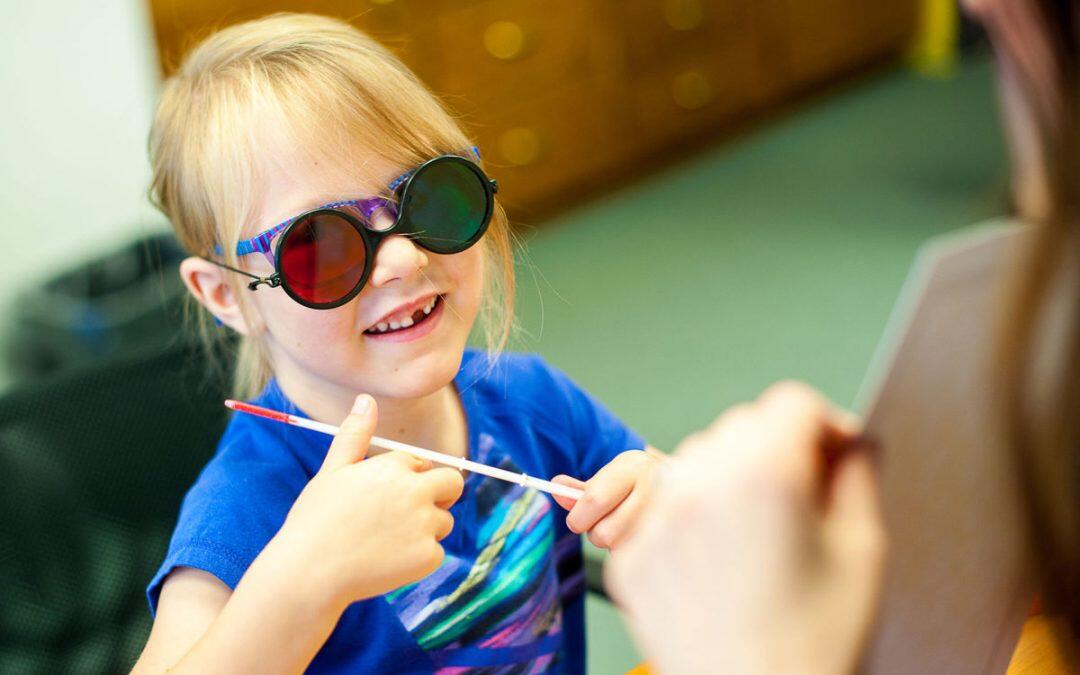Clear vision doesn’t necessarily mean healthy eyes.
It’s a common misconception regarding visual health and something that goes beyond a basic eye exam. With the visual system heavily linked to motor movements, eye health plays a bigger role in everyday life than most people realize.
Deanna Lugo couldn’t understand why her 9-year-old daughter Analeina was struggling with reading. It wasn’t until Analeina’s optometrist, chiropractor and pediatrician recommended vision therapy and referred her to Dr. Penelope Suter that it was discovered that Analeina had convergence insufficiency and accommodative insufficiency, which means she has trouble focusing and maintaining focus on near items, like the words in a book.
A person can have 20/20 vision but still have convergence and/or accommodative insufficiency.
“Sight is what your eyes see; vision is how your brain interprets what your eyes see,” said Beth Houlihan, a certified optometric vision therapist who has worked with Analeina since April 2016.
Because of the brain’s tendency to “self-correct,” combined with the gradual nature of vision degradation, many may not realize there is an issue with their vision to begin with.
“Our brains do not like to tell us about problems with our vision; it just keeps filling in and filling in,” said Suter, a Bakersfield optometrist with a specialty in vision therapy and vision rehabilitation.
According to Suter, when there’s a disconnect between the eyes and the brain, more energy and focus are expended into seeing what’s on the page instead of processing the information, which means a person may be able to read the words but not retain the meaning of the material putting them at a disadvantage in the classroom. The only way to determine if these problems exist is through an eye exam and health check.
The checkup starts with a general test and analysis of any functional complaints. Some problems can be fixed with glasses but muscle problems, such as difficulty coordinating the eyes, require a different solution.
Vision therapy is programmatic therapy – muscular and neuromuscular, perceptual and cognitive – that helps patients function better by synchronizing vision and motor function. The procedures assist children and adults with issues ranging from learning problems to brain injuries.
“I love the brain injury part of the practice because it’s a place where you really get to help give people back some quality of life,” Suter said.
Because the visual system is involved in so many things – from understanding what is seen, remembering what is seen, moving through space, guiding fine motor movements and gross motor movements, etc. – it plays a critical role in day-to-day life. Most people just assume their motor system is doing what their visual system tells it, but when it’s put to the test –from kids who are having trouble reading all the way up to high-end athletes – that’s frequently not the case, Suter said.
“You can increase everyone’s level of performance by making sure that the motor system and the visual system are in sync,” Suter said. “It all starts with healthy eyes.”
In addition to improved performance in the classroom and on the soccer field, Analeina’s confidence has also benefitted from vision therapy.
“She’s proud about (vision therapy),” Deanna said. “It answers why she sees things differently than we do.” 
Source: http://bit.ly/2uTD4ra











